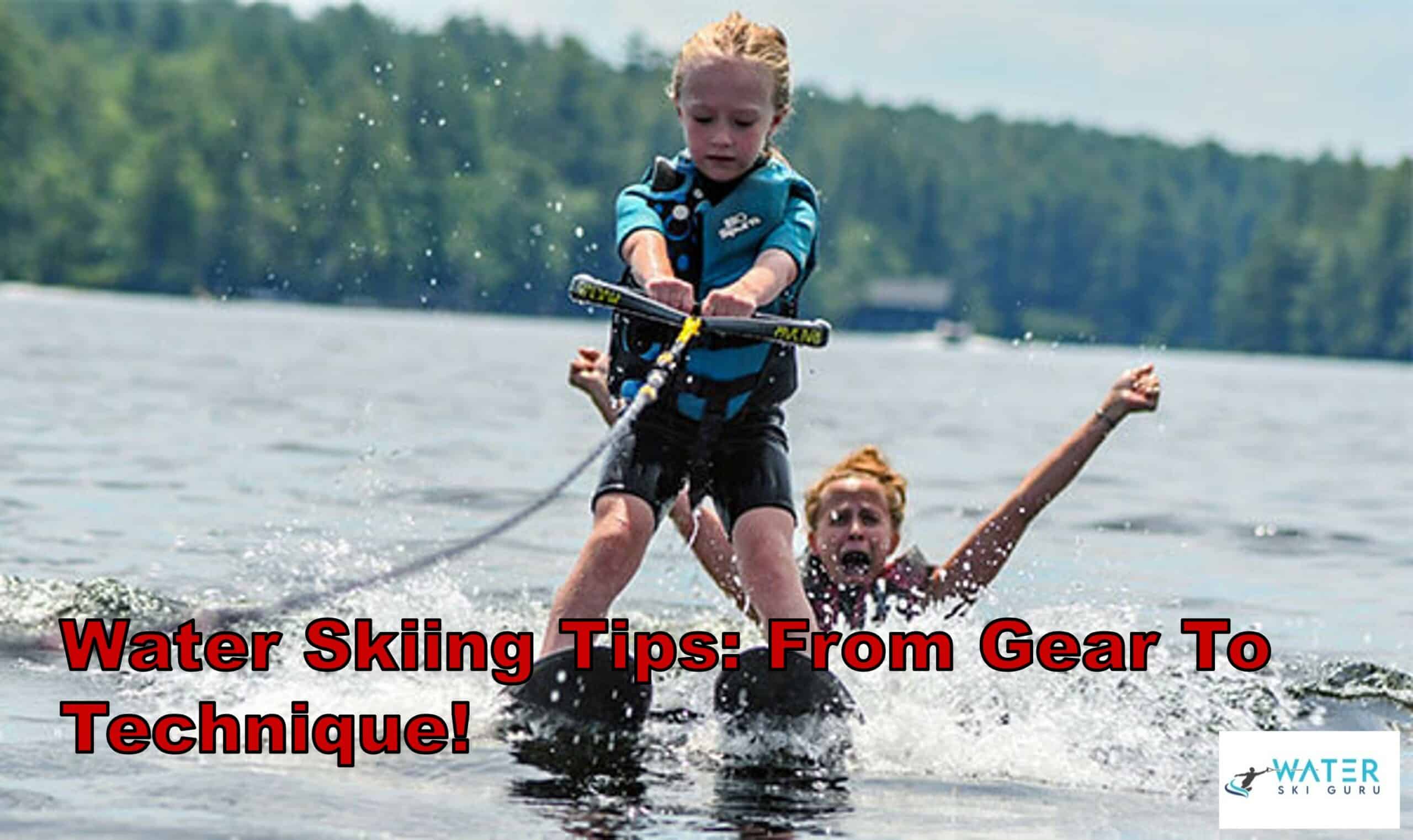Water skiing is a thrilling and exciting water sport that requires a combination of skill, balance, and strength. As someone who has been coaching and skiing for over 20 years, I can confidently say that there are always tips and tricks to improve your technique and make the experience more enjoyable. Whether you’re a beginner or an experienced skier, there’s always room for improvement.
In this article, I’ll be sharing my best water skiing tips: from gear to technique! I’ll cover everything from choosing the appropriate gear to mastering the correct technique. Whether you’re looking to improve your turns, perfect your balance, or simply want to learn more about this exciting sport, this article will provide you with the information you need to take your water skiing to the next level.
So, let’s dive in and learn more about how to become a better water skier!
Gear and Preparation
I always make sure to have appropriate gear that fits before water skiing, as it’s crucial for a successful and safe experience. Wearing a life jacket that fits properly is a must, as it can save your life in case of an accident.
Additionally, wearing a wet suit and gloves can protect you from cold water and wind, allowing you to ski for longer periods of time. It’s also important to wear a comfortable and snug-fitting ski vest that won’t ride up or restrict your movement. A helmet can also provide extra protection for your head.
Pre-ski stretching is also essential to avoid injuries and improve performance. I like to perform dynamic stretches that mimic the movements of water skiing, such as lunges, squats, and leg swings. It’s also important to stretch your arms, shoulders, and back, as they are heavily used during skiing. Stretching can increase your flexibility and range of motion, allowing you to perform better and reduce the risk of injuries.
Finally, I always make sure my gear is in good condition before skiing, checking for any tears, holes, or loose straps. Proper fitting gear and pre-ski stretching can make a huge difference in your skiing experience, allowing you to enjoy the sport to the fullest.
Technique and Tips
Keeping your arms straight and making yourself as small as possible in the water are important techniques to master when learning to water ski. These techniques help to maintain balance and control while being pulled behind a boat. Another common mistake beginners make is trying to stand up too quickly. It’s important to take your time and gradually rise out of the water, using the boat’s momentum to assist you.
As you become more comfortable with the basics of water skiing, you may want to try some advanced tricks. One popular trick is the slalom, where the skier weaves in and out of a series of buoys. Another trick is the jump, where the skier launches off a ramp and performs acrobatic maneuvers in the air. Remember, mastering these tricks takes time and practice, so don’t get discouraged if you don’t get it right away. Stick with it and soon you’ll be impressing your friends with your water skiing skills.
| Emotion | Technique | Tip |
| Excitement | Jumping | When attempting a jump, make sure to keep your tips up and lean back to maintain balance in the air. |
| Adrenaline | Slalom | When weaving in and out of the buoys, focus on your form and keep your weight centered over your skis. |
| Confidence | Starting | Start with your skis parallel to each other and your arms straight, then gradually rise out of the water using the boat’s momentum. |
| Determination | Falling | If you fall, let go of the handle and wait for the boat to circle back around. Don’t be discouraged, everyone falls at some point! |
By incorporating these tips and techniques into your water skiing routine, you’ll be well on your way to becoming a skilled and confident skier. Remember to take your time and practice regularly, and don’t be afraid to try new things and push yourself to the next level. With patience and perseverance, you’ll be performing advanced tricks in no time.
Coach and Driver Communication
Communication between the coach and driver is essential for a successful water skiing experience. As the skier, I rely on the driver for a smooth and safe ride, while the coach provides guidance and encouragement.
One crucial aspect of this communication is the use of hand signals. The coach can signal to the driver to speed up, slow down, or stop the boat using specific hand gestures. Similarly, the driver can signal to the coach about the skier’s progress or any potential safety concerns.
In addition to hand signals, shouted commands are also crucial for the coach and driver to communicate effectively. Shouted commands can be particularly helpful during takeoff, idle, and stopping phases. The coach can shout out instructions to the skier, while the driver can provide feedback to the coach.
The use of shouted commands and hand signals allows everyone on the boat to stay on the same page and work together to ensure a fun and successful water skiing experience.
Frequently Asked Questions
Are there any age restrictions for water skiing?
Age is just a number when it comes to water skiing, but safety is key. While there are no official age restrictions, starting young with proper gear and supervision can make learning easier. Always prioritize safety first.
Can water skiing be dangerous and what precautions should be taken?
Water skiing can be dangerous without proper precautions. To stay safe, always wear appropriate gear and have a spotter in the water for support. Take breaks when needed and follow speed guidelines based on your weight.
How do you choose the right boat for water skiing?
When choosing a boat for water skiing, consider weight, engine power, and hull design. Top brands include MasterCraft, Nautique, and Malibu. Personal preference and budget also play a role in the decision-making process.
Is it necessary to have a license to water ski?
To legally water ski, a license is usually not required. However, there may be local regulations or specific areas where a license is necessary. It’s important to check with local authorities before hitting the water.
What are some common mistakes beginners make while water skiing?
As a water skiing coach with over 20 years of experience, I’ve seen common mistakes beginners make such as leaning back, not keeping arms straight, and not bending knees. Tips for improvement include dry land practice and starting with double wide skis.
Conclusion
Well folks, that’s all for now. I hope you found these water skiing tips helpful and informative.
Remember, just like skiing on snow, the key to success is preparation and technique. Before hitting the water, make sure you have the appropriate gear and have warmed up properly.
Once on the water, focus on maintaining proper stance and body position, and communicate with your coach and driver to ensure a safe and enjoyable experience.
Water skiing is like navigating the waves of life. It takes skill, balance, and strength to stay afloat and glide through the obstacles. But with the right gear and technique, you can conquer any challenge and enjoy the exhilarating rush of the ride.
So grab your skis and hit the water, for the world is your playground and the possibilities are endless. Let the waves guide you and the sun warm your skin, as you embark on a journey of adventure and discovery. Happy skiing!

